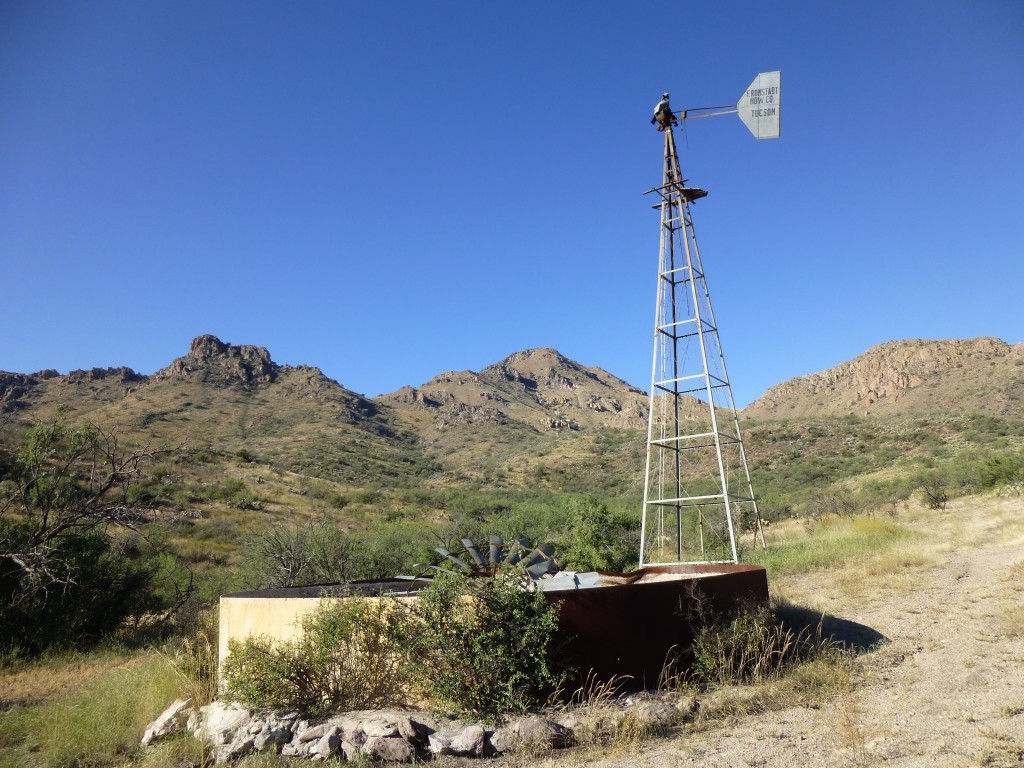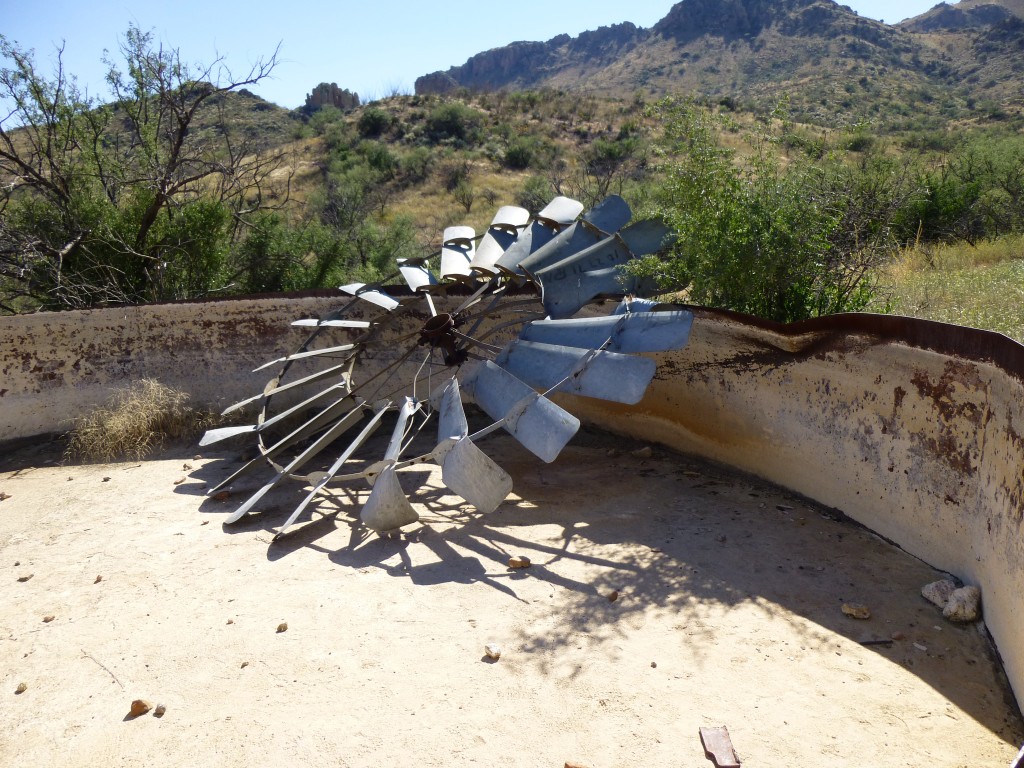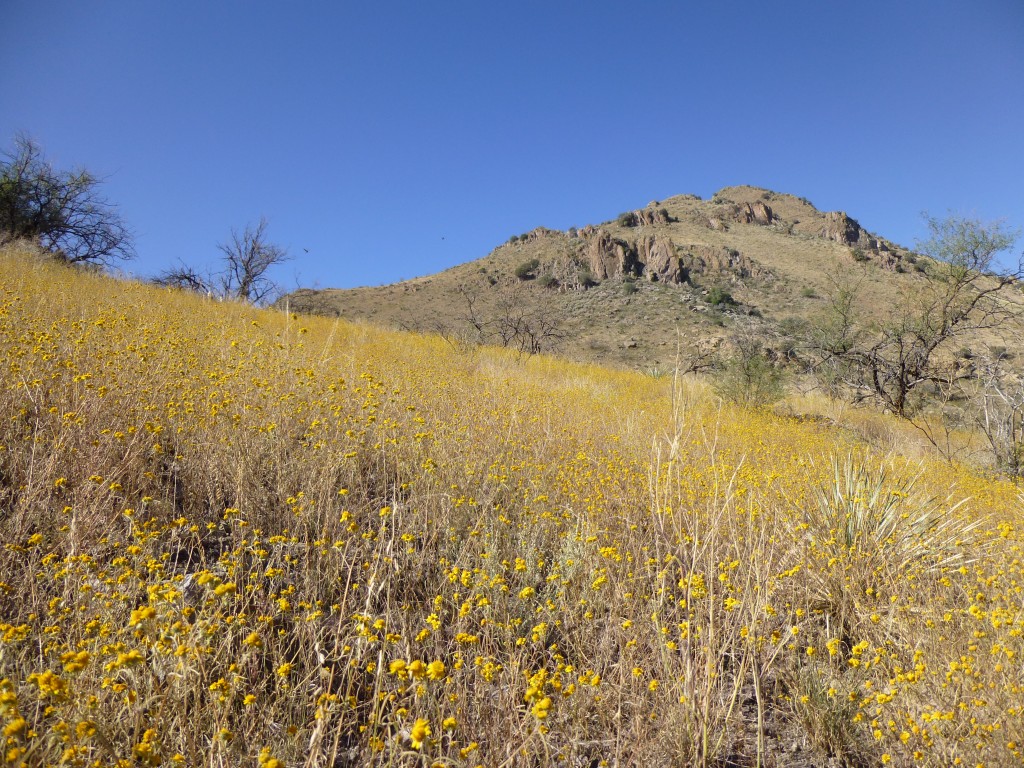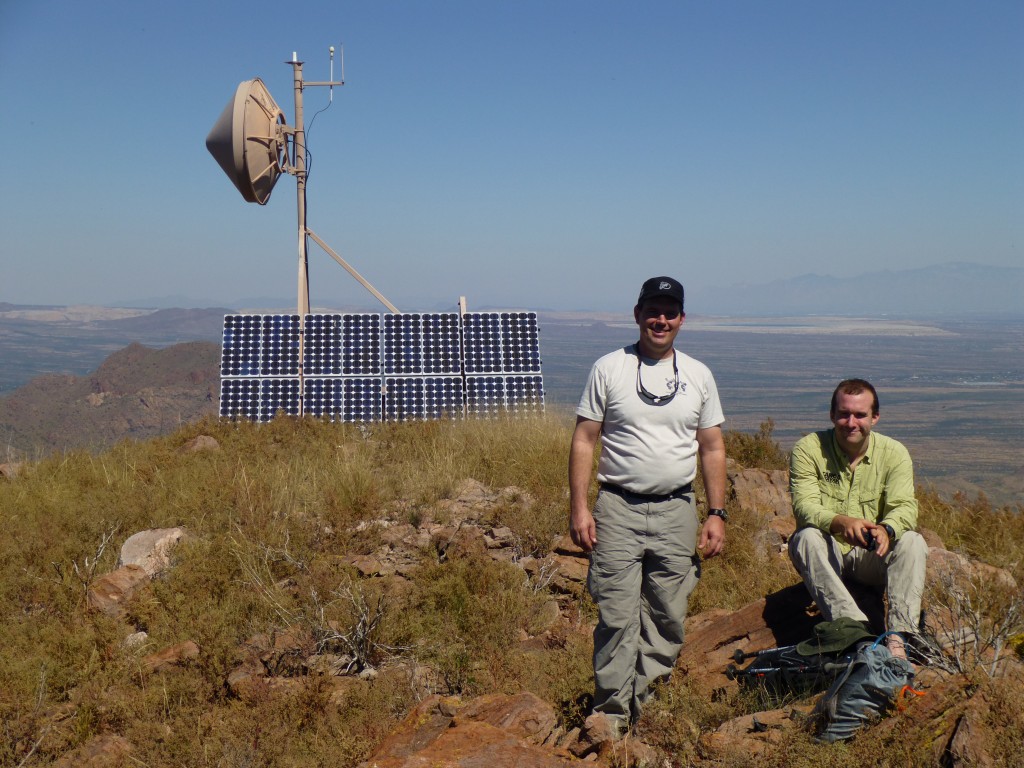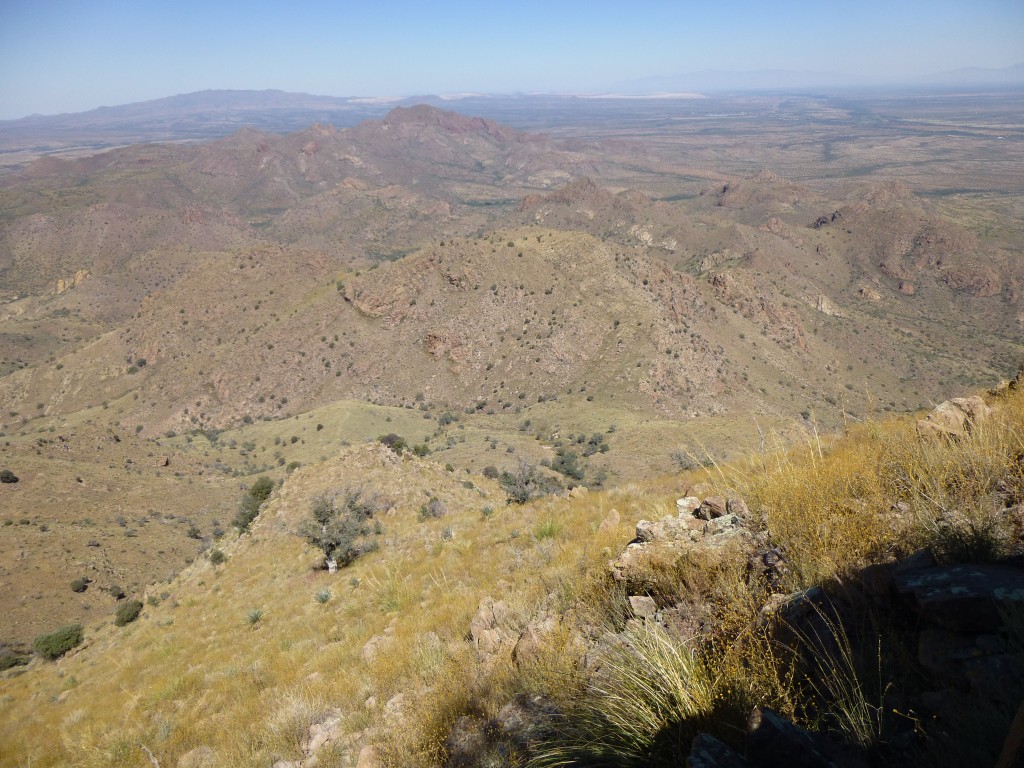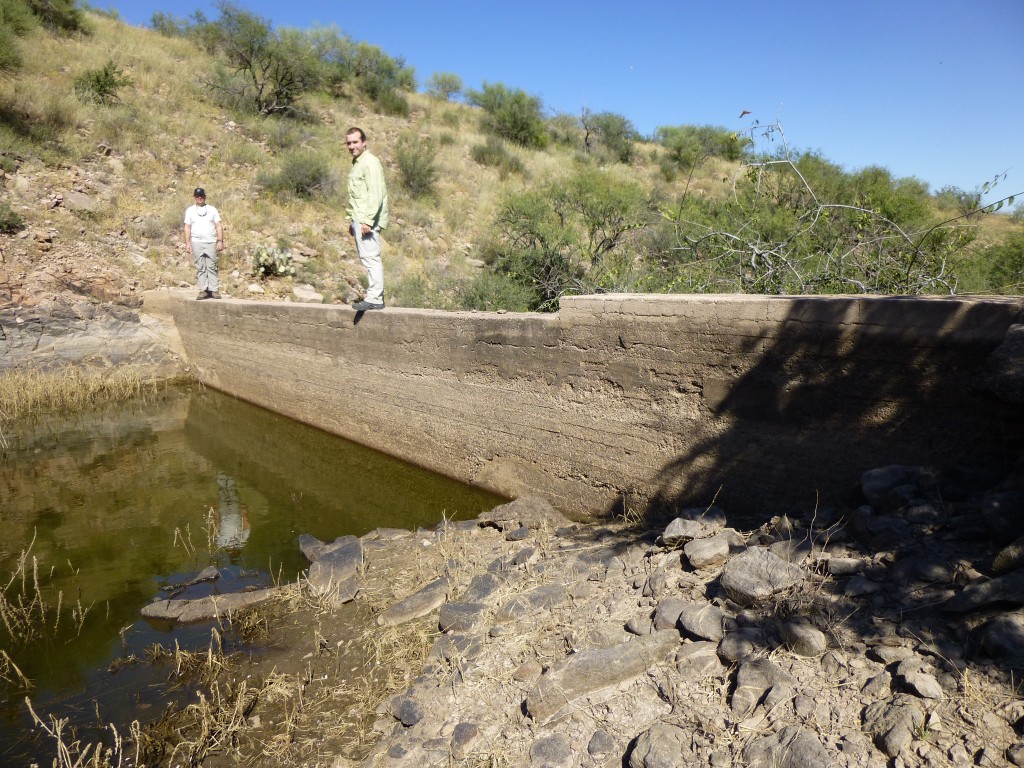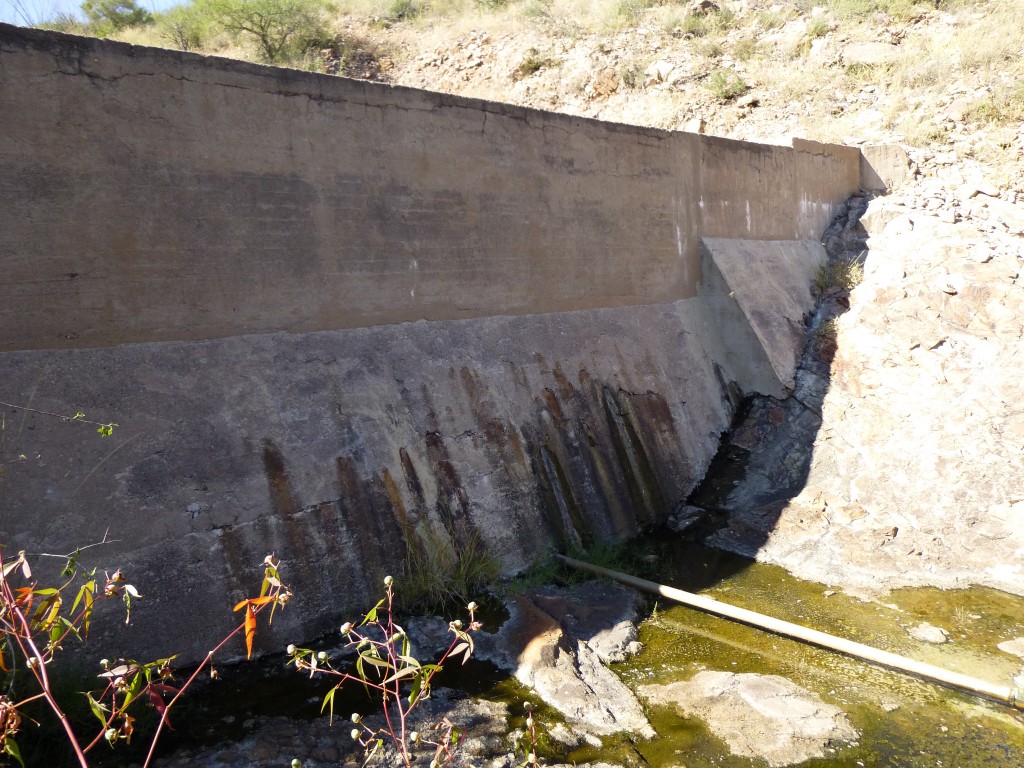Finally, the weather is starting to cool off – hallelujah! We here in the desert wait (or should I say suffer?) through six months of pretty brutal weather to finally reap our reward of six months of bliss. So, a few days ago, I organized a trip with Jake and Erik to go out and climb something. We decided to meet on the south side of town and convoy south in two vehicles. Forty miles later, we left the freeway and drove to the start of our dirt road into the mountains.
Sadly, a lot of land development and home-building had obliterated our access to the road we needed to drive. Locked gates and suspicious residents finally caused us to leave the area and choose another way in to our peak. Erik parked his car and the three of us piled into my truck and away we went. The first several miles were on a really good dirt road and we made up some lost time. But, since we were forced to pick a route other than our first choice, we then had to drive 1.6 miles south on a road shown as four-wheel-drive on the map. Most of it was fine, but there were three long, steep hills which gave us pause. High-clearance wasn’t so necessary, but the 4wd really did come in handy.
We finally joined up with the road we had originally wanted to take, the one the neighbors put the kaibosh on, and drove the last 1.2 miles to Anita Well. It was definitely the end of the road. An old windmill stood in ruins by a large metal tank.
Two things about the old windmill caught our eye right away. The first was the lettering on the tail, which said: “F. RONSTADT HDW. CO. TUCSON.” Among all of the windmills I have seen in the desert, this was the only one that had the Ronstadt name on it. Some of you may recall Linda Ronstadt, a popular singer who, in fact, was from Tucson, Arizona. Her family has been well-known in that city since 1885, having become famous in business and politics. Older residents will recall the Ronstadt Hardware store in Tucson, which started selling windmills such as this one in the very early 1900s. I don’t know if they had made it themselves, or had just put their name on it. There were literally thousands of manufacturers of windmills in the U.S. at one time or another, starting way back in 1855. So it is possible that this one could actually be more than a century old.
The second thing we noticed was that the blade assembly had fallen down and was lying inside the metal tank nearby. This thing was huge, probably ten feet across. And who was Anita, the well’s namesake?
Time had been a’wasting – by the time we were ready to set out on foot, it was 8:45 a.m. Even though it was only supposed to be around 80 for a high on the summit, it already felt warm in the direct sun. A few minutes of walking up an old track brought us to the start of the real fun. Oh yes, almost forgot – we were here to climb Sardina Peak, elevation 5,616 feet, in the Tumacacori Mountains. Its summit reared two thousand vertical feet above us, and was in plain view from the truck. In the first picture in this story, the top of Sardina is just to the left of the tower. We had a long way to go.
The brush was fairly thick, and laden with thorns and stickers. We pushed, and it pushed back, but we ploughed on. Six hundred feet up, we used a rocky ridge to avoid some of it and broke out into the open. It didn’t last, though, as we had to leave the comfort of the ridge and sidehill through a drainage which was particularly messy. Once through it, we crossed a broad stretch of yellow flowers, and breathing the clouds of pollen caused a real sneezing jag for all of us.
After the flowers, we climbed steadily on and soon came across a well-worn path. This was no animal track – rather, it had been made by many human feet, undocumented entrants passing this way, heading farther north into the promised land. We too walked it, gaining elevation, to finally arrive at a pass at just over 4,600 feet – we were 16 miles from the Mexican border.
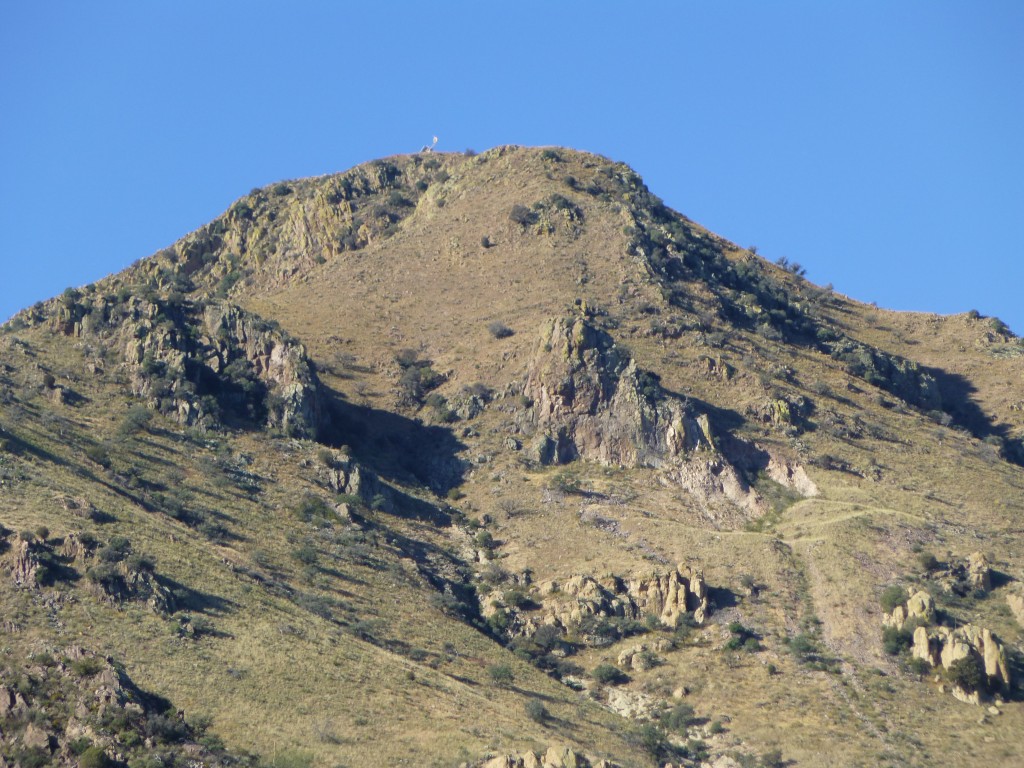 There was still another thousand vertical feet to climb to the summit, and we intended to go straight up from the pass, following the east ridge. There was something up high, on what appeared to be the summit, that looked strange from below. It looked like a yucca in bloom, but given the distance still to go to the summit, it would have had to be the world’s biggest yucca. You can see it if you look closely in the above photo. On we went, climbing up through several bands of outcrop, nothing too significant, until we stepped on to the summit. Mystery solved – it was a photovoltaic array and a parabolic dish, perhaps twenty feet tall. There weren’t any markings on it that indicated who owned it.
There was still another thousand vertical feet to climb to the summit, and we intended to go straight up from the pass, following the east ridge. There was something up high, on what appeared to be the summit, that looked strange from below. It looked like a yucca in bloom, but given the distance still to go to the summit, it would have had to be the world’s biggest yucca. You can see it if you look closely in the above photo. On we went, climbing up through several bands of outcrop, nothing too significant, until we stepped on to the summit. Mystery solved – it was a photovoltaic array and a parabolic dish, perhaps twenty feet tall. There weren’t any markings on it that indicated who owned it.
After a bit of poking around, we found a register and signed in – quite a few others had preceded us. A reference book on Arizona place names says this about Sardina Peak:
A Mexican named Sarvinia lived for years near this peak. With reference to the peak, his name gradually was anglicized to Sardina.
It had taken about 2 hours 20 minutes to do the climb. The plan was now to head north and climb two more summits – a lot of ground yet to cover! We moved over to the edge of the summit, and stared down into the lower country to the north – the first order of business was to drop a thousand feet to a saddle.
The other two peaks were so far away that they were hard to distinguish from everything else. The above picture shows a large bump down below, dotted with a few trees, right in the center of the photo, but that is not one of the two peaks, not even close. Down the steep slope we went, trying not to get cliffed out, inadvertently setting rocks loose which rolled down ahead of us. After reaching the saddle, we had to climb over a 200-foot rise before carrying on. The ridge we followed now narrowed quite a bit. There were a total of seven bumps along it, none of them over one hundred feet high, and I had hoped we could cross over each of these en route to the next peak. It turned out that they were more steep and rocky than I had hoped, and it made more sense to traverse below them than to climb each of them. By the time we had bypassed three of them, it became apparent we were running out of time. One of the guys had to be back in Tucson by 5:00 pm, so we decided to pull the plug.
It was a simple matter to descend 700 vertical feet to the east to arrive back at Anita Well. That done, we still had time to do one more thing before heading back to town.
The map showed, in the next valley to the north, something called “CCC Dam”. Intriguing. History tells us that the projects undertaken by the Civilian Conservation Corps between 1933 and 1942 were in mostly rural locations like this one. Sure enough, we found the dam in a heavily-wooded wash, not 150 yards from the road. Cattle were drinking from the pond on the upstream side of the well-made structure. Dams like this one out in the desert tend to silt in completely over time – perhaps this one hadn’t because it was built so high in the first place. You could tell it had been well-engineered and build to last.
It was nice to have stopped to see this – you couldn’t help but think, at least a little bit, of all the hard work that had gone on here. We walked back to the truck and continued the drive back out to the main road, where Erik picked up his car and he and Jake drove back to Tucson together. Another fine day in the mountains in the great state of Arizona.
Please visit our Facebook page at https://www.facebook.com/pages/Desert-Mountaineer/192730747542690

